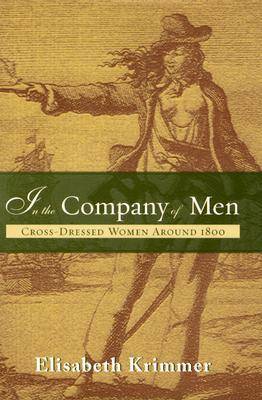Kritik: German Literary Theory and Cultural Studies
1 total work
This volume examines the motif of cross-dressing in 18th-century German literature and culture to gain a deeper understanding of concepts of body, gender and identity. In the wake of the revolutionary wars, the figure of the cross-dressed woman proliferated in novels, plays, popular tales and real-life accounts that circulated throughout Germany. Sometimes appearing in soldier's garb and engaging in battle like Joan of Arc, other times donning overalls and plying a trade, the female cross-dresser tested the revolutionary ideas of freedom and equality, Perhaps her most provocative challenge, however, was to contemporary notions of what it meant to be a woman or a man. Elisabeth Krimmer explores this challenge by tracing the motif of cross-dressing in novels and plays by 18th-century German writers. Revolutionary ideology wasn't the sole motivation for the presence of cross-dressed female characters in literary works. Many writers were responding to a paradigm shift in the definition of gender, whereby female and male bodies were no longer considered merely different configurations of identical physical structures, but as wholly different from one another.
Analysing the figure of the cross-dresser allows insights into the discursive strategies and vagaries that surrounded the introduction of the new gender model, in which women's bodies became the primary anchors of their underprivileged position. Krimmer shows that female writers expressed their resistance to the new body-gender axis through their portrayal of cross-dressed characters. By creating heroines, whose gender identity is defined through performance, not biology, women writers refuted a theory that conceives of anatomy as destiny. Revealing the similarities between this concept and postmodern ideas of gender performance, Krimmer brings our 18th-century heritage to bear on current issues of body politics.
Analysing the figure of the cross-dresser allows insights into the discursive strategies and vagaries that surrounded the introduction of the new gender model, in which women's bodies became the primary anchors of their underprivileged position. Krimmer shows that female writers expressed their resistance to the new body-gender axis through their portrayal of cross-dressed characters. By creating heroines, whose gender identity is defined through performance, not biology, women writers refuted a theory that conceives of anatomy as destiny. Revealing the similarities between this concept and postmodern ideas of gender performance, Krimmer brings our 18th-century heritage to bear on current issues of body politics.
